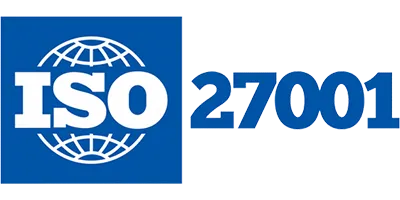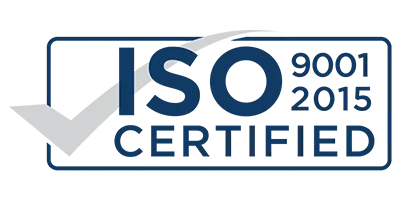To identify business rules and requirements, testers often ask for examples. Let’s examine the crucial role of testing in the Three Amigos strategy. The product owner or business analyst brings forward the request, usually by presenting a problem in need of a solution. The developer then proposes possible solutions in the form of suggestions. The tester is the one to protest, asking what-if and other types of questions.
Lexical scoping refers to the semantic scope of variable names in a function or program. In other words, lexical variable scope answers the questions of whether a given variable has meaning outside of the function it is written in – and this is determined by the surrounding code. Structured programming is a programming paradigm that favors one, singular structure per program.
What Is Software Quality Assurance?
Instead, software testers write bug reports so software developers can fix the buggy code. After a function or program is written in code, software developers must test their code. In virtually cloud quality assurance every industry, keeping records prompts more organization throughout a business’s workforce and workflow. Software development, and similarly software quality assurance, is no different.
Large development teams look to QA engineers to create a test plan to ensures that all the pieces work together seamlessly in the end product. Today we’re looking at software quality assurance, delving into what it is, why it’s essential, and its best practices. Once you reach the end of the article, you’ll likely agree that quality assurance is one of the most valuable processes in the software development pipeline. Now that we’ve covered the basics of software quality assurance, let’s look at the principles.
Why is software development QA required?
The feedback is then channeled back to the SDLC process where a different or additional set of Quality Control functions may be introduced to address those new requirements. The QA process ensures that the wider goal and vision of the business is achieved by delivering software that meets all quality requirements from both technology and business perspectives. With the rise of touch-screen devices and desktop and mobile applications – from the automotive to medical industries – more user interfaces are created, which all need to be tested.

Any changes made, whether fixes to defects or otherwise, must also be evaluated, and their impact, if any, measured. Such checks will ensure that any changes made to fix defects are effective, and also ensures that they are compatible with the project as a whole. Formal technical reviews (FTR) are another incredibly important part of SQA systems. These, as the name suggests, evaluate the quality and design of any prototype software. Software development quality assurance, as a formalized process, can trace its roots to the manufacturing industry.
How is quality assurance different from testing?
QC functions involve a range of testing activities used to detect and resolve technical issues. These are followed together with the development processes over the course of the SDLC. In the role of the protester, testers play a critical part in the Three Amigos session. They use specification by example, i.e., asking scenario-based questions to elicit business and technical requirements and to facilitate the development of user stories via example mapping and other techniques.

Quality Assurance (QA) includes the entire software development lifecycle and collaborates with all business operations. Automated testing is the use of software tools to execute predefined test cases, compare expected and actual results, and report any errors or defects. Automated testing can save time, reduce human errors, and increase test coverage.
Who uses QA standards?
Another potentially important skill that can differentiate you is the ability to read and understand the underlying code that is the application. Whether the application was built with Java or Visual Basic the ability to read the code that makes up the application is valuable in helping to identify the specific spots where problems are occurring. This reduces the amount of time the developer must spend trying to sort through the code and find the problem. As mentioned briefly above, the larger and more public the system, the more important performance testing becomes. Because of this, the skills of performance testing and interpreting the results of that testing become more valuable as the system’s importance increases.
- In such cases, hiring developers from Latin America proves to be a viable alternative as they can readily adapt to the Eastern or Pacific Time Zone.
- But even in this quick world of innovation and surprise, it stands to reason there’ll be a steady need for professionals who ensure software programs and systems work as intended.
- Thus, the importance of software quality assurance cannot be underestimated.
- Experienced teams know that QA in software development can’t be compared to testing or any other process; it brings unique value and ensures that the product or service meets specific requirements.
- The SQAP identifies the team’s SQA responsibilities, identifies the SQA work products, and lists any areas that require reviewing and auditing.
- They’ll cross out a couple of months on their calendar, get a grasp of Java or Swift – for Android or Apple respectively – and be on their way.
The defect management approach works by counting and managing defects. Defects encompass a large range of errors from poor data handling to bad code. According to a Capgemini survey, 44% of IT workers consider testing a critical activity for ensuring project quality output. This demonstrates that, while testing is necessary, it is only one component of the quality assurance process. By the end of this article, you will most certainly agree that quality assurance is one of the most important activities in the software development pipeline.
Top 5 Organizational Trends in Quality Management – 2014 and Beyond
This method offers many advantages that benefit both time-to-market, resource savings, and quality software production. Other benefits may also be enjoyed, such as cost-effectiveness, time-saving, team adaptability, multiple methodologies, etc. Non-disclosure Agreements, also referred to as Non-Disclosure Agreements (NDA), must be signed before accessing sensitive data about an app, customer, company, etc. Additionally, Service Level Agreements (SLAs) set out guidelines and deadlines for testing during various stages.

For Senior C Developers in South America, the average salary is currently around $100,000 whereas a mid-level developer costs around $76,000. It is a middle-level language and as such developers can use it for low-level programming like building kernels and drivers as well as high-level programming like developing software applications. Software quality assurance is a must-have for any business using software development, whether it’s for day-to-day operations or a product for consumers. Generally, quality assurance denotes a set of methods and activities that validate a software product’s compliance with established specifications. Although professionals such as Quality Assurance Engineers and Testers are essential in ensuring software quality, everyone is responsible for quality in the most effective teams. A subset of QA activities is used to check that the code and system work as intended and that the criteria are met.
Everything you need to know about Sprints in project management
Software Quality Assurance (SQA) is simply a way to assure quality in the software. It is the set of activities which ensure processes, procedures as well as standards are suitable for the project and implemented correctly. The defect management approach comes in handy for tracking defects and defining categories to mark their severity.
SQA Techniques
The downside of this is that humans struggle to keep up with the conversation. Low-level access to memory, the use of simple keywords, and a clean syntax makes C easy to use for such a task. In recursive programming, functions have the ability to call on themselves, whether directly or indirectly. The utility of this feature is to break up a problem into smaller problems. Specifically, coders can use a previously established value to compute a new one.
Find Post Graduate Program in Lean Six Sigma in these cities
Most automated testing tools also extend themselves into being used to test scalability and performance. These tools help to identify how a system will respond under heavy loads such as large numbers of simultaneous users, large amounts of data, and more. These tools allow you to run a test script without the need to be manually banging out keys on a keyboard or clicks of a mouse. These tools come with recording software to allow you to record a set of steps and convert it into a scripting language. By customizing the script from the recorded script it is possible to parameterize the set of steps so that different data can be used.









